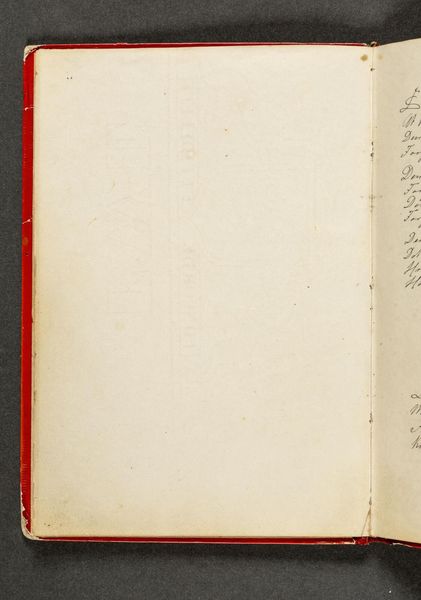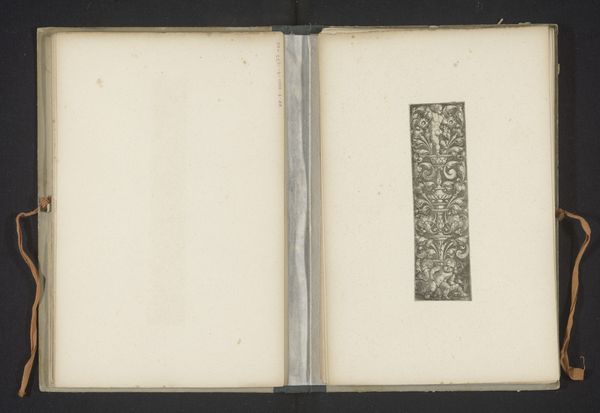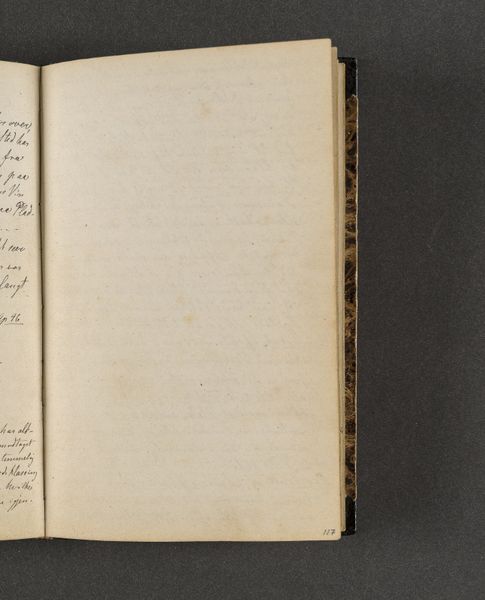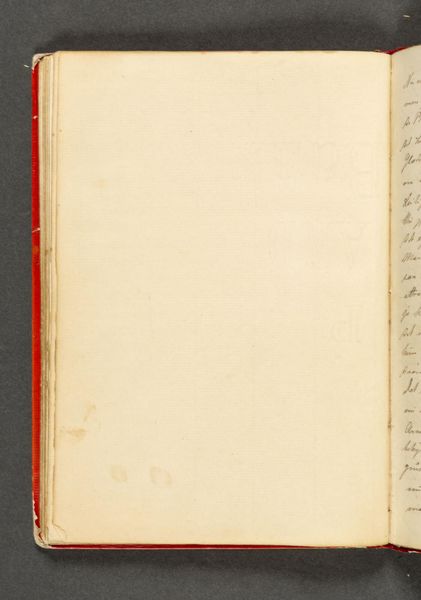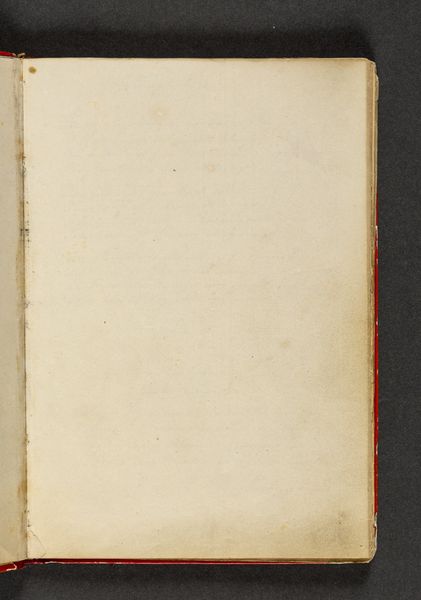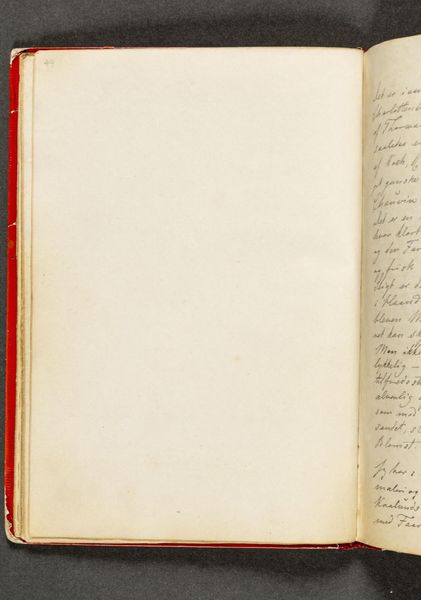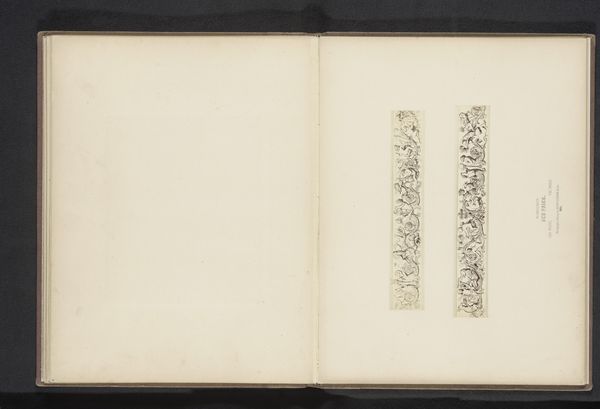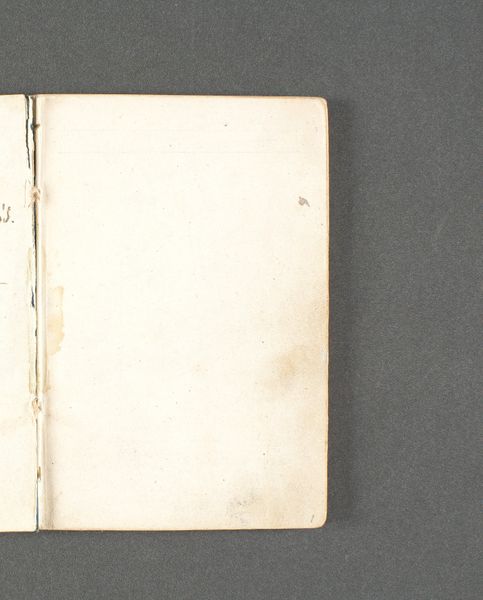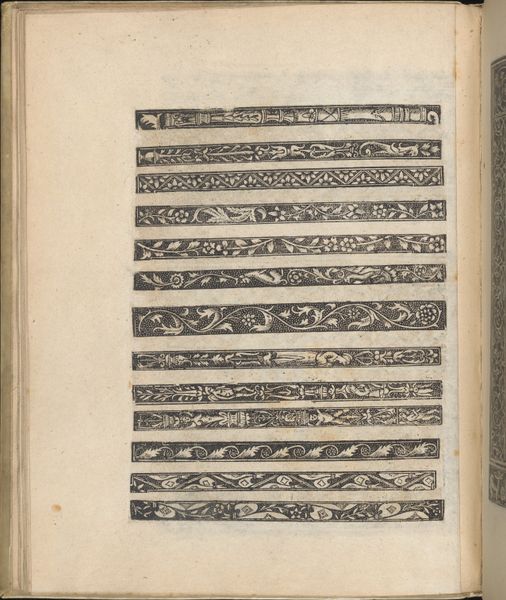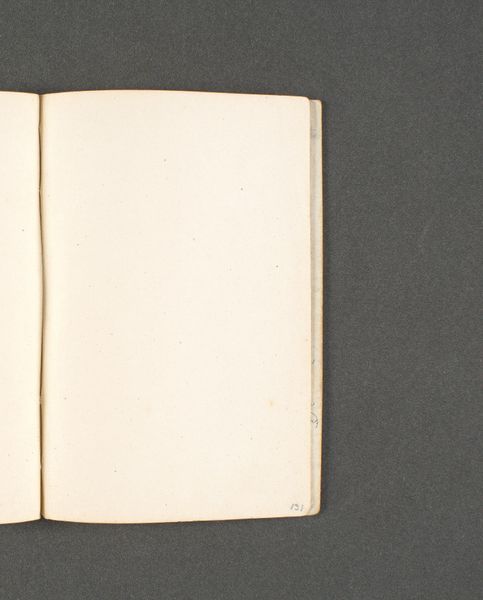
drawing, mixed-media, textile, paper
#
drawing
#
aged paper
#
mixed-media
#
book binding
#
paperlike
#
sketch book
#
textile
#
personal journal design
#
paper texture
#
paper
#
personal sketchbook
#
romanticism
#
folded paper
#
sketchbook art
#
design on paper
Dimensions: 161 mm (height) x 103 mm (width) x 11 mm (depth) (monteringsmaal)
Curator: Here we have "Rejsedagbog," or "Travel Journal," dating from 1845-1846 by Johan Thomas Lundbye. It's currently held here at the SMK, and it showcases Lundbye's sketches and notes from his travels, executed with mixed media on paper and bound in textile. Editor: Immediately, the sense of intimacy strikes me. It’s aged, personal, almost like a peek into Lundbye's private thoughts, handwritten text running alongside open sketch pages. The paper texture itself suggests so much. Curator: Indeed, it's a fantastic look into 19th-century travel and art practices. The journal format allows for a very direct connection to the artist's experiences. Think about the cultural context: travel was less accessible. These journals were a key method for disseminating information, art and personal accounts to the public through artistic circles and networks. Editor: I see the binding—that detail emphasizes that this wasn't just a collection of loose sketches. It's curated. It has a narrative arc, even if fragmentary. We see Lundbye self-consciously crafting his artistic identity through the selection and presentation of his experiences. What political perspectives influenced his journey at the time? Curator: Lundbye’s artistic production reflects the national romanticism prevalent during the period, characterized by celebrating local nature and landscapes. Considering his identity as an artist in Danish history, there are undercurrents of defining a national character tied to specific landscapes, presented through his aesthetic romantic perspective. The journals served as both private musings and, potentially, future material for larger works shown in exhibitions or available in prints. Editor: That tension, between private reflection and public performance, speaks to so many aspects of the artist’s existence within that cultural moment, doesn't it? Seeing something as fragile and aged as this creates an awareness of the power structures implicit within this form of personal and artistic expression. What and whom was he painting for? What power structures underpinned these images, and who was being ignored during the course of this representation? Curator: Precisely, it reminds us how interwoven personal journeys and cultural identity become when mediated through art. Editor: I think, too, that seeing it displayed within the context of a national museum calls forth those original cultural constructions even now.
Comments
No comments
Be the first to comment and join the conversation on the ultimate creative platform.
